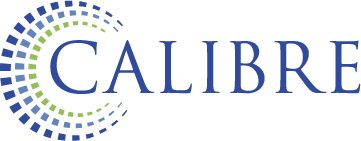On March 6, 2020, the Office of Labor-Management Standards (OLMS) published a final rule establishing a Form T–1, Trust Annual Report that requires annual reporting by Form LM-2 filing labor organizations on financial information pertinent to “trusts in which a labor organization is interested” (“section 3(l) trusts”).
Form T-1 must be submitted electronically to the Department of Labor via the Office of Labor-Management Standards (OLMS) Electronic Forms System (EFS) available on the OLMS website at: http://www.dol.gov/olms. Paper reports are accepted only if a temporary hardship exemption is asserted. Once filed, Form T-1 will be available for inspection by the public at http://www.unionreports.gov.
Two principal officers of the labor organization are required to sign Form T-1 and are personally responsible for its filing and accuracy. The officers filing the Form are responsible for maintaining records, to be kept for five years after the filing date, which provide sufficient detail of the information and data necessary to verify the accuracy and completeness of the report.
On page one of Form T-1, file numbers exist for both the union and trust. The period covered is that of the trust. If the report is amended, hardship exempted or a terminal report, it should be identified as such. Page one identifies the name and address of the union and of the trust. In addition to the name and address of the trust, the employer identification number and purpose of the trust is identified. The labor organization has the option to submit an independent, certified audit in place of the remainder of the Form T-1. If this occurs, it is not necessary to complete the remainder of the Form.
Page two of the Form poses yes/no questions, where yes responses require an additional comment. Page two also reports total assets, liabilities, receipts, and disbursements of the trust during the reporting period. An individual breakdown of accounts is not reported on the Form. Receipts and disbursements shown reflect the gross amount of cash flowing in and out of the trust. Transfers of cash within the trust are not reported as receipts and disbursements. Sales or redemptions of investments should not be reported as a receipt or disbursement if these funds were reinvested within a week without using the funds for any other purpose between the sale of investment and repurchase. Receipts and disbursements by an agent on behalf of the trust are considered receipts and disbursements of the trust and must be reported in the same detail as other receipts and disbursements.
The Form has three Schedules:
- individually identified receipts;
- individually identified disbursements; and
- disbursements to officers and employees of the trust.
All entities for whom the trust received/disbursed $10,000 or more from/to the trust during the reporting period are reported on Schedules One or Two. Individual receipts/disbursements of $10,000 or more are individually listed on Schedule One or Two along with their purpose and date. There are some exceptions – if receipts are derived from pension, health or other benefit contributions that are provided pursuant to a collective bargaining agreement covering such contributions, they do not need to be itemized on Schedule One.
Additionally, the labor organization is not required to itemize benefit payments on Schedule Two from the trust to a plan participant or beneficiary, if the such payments are to be made is specified in a written agreement. Sales or redemptions of investments should not be reported as an individually identified receipt or individually identified disbursement if these funds were reinvested within a week without using the funds for any other purpose between the sale of investment and repurchase. Credit card charges must be allocated to the recipient of the payment by the credit card company on Schedule Two and not to the credit card company itself. Schedule Three lists the gross salary, allowances, disbursements for official business and other disbursements of the names and titles of officers and employees of the trust who received $10,000 or more directly or indirectly during the reporting period.
Effective Date
The rule is effective April 6, 2020; however, no labor organization is required to file Form T-1 until 90 days after the conclusion of its first fiscal year that begins on or after June 4, 2020. A Form T-1 covers a trust’s most recently concluded fiscal year, and is required only for trusts whose fiscal year begins on or after June 4, 2020. A trust’s “most recently concluded fiscal year” is the fiscal year ending on or before 90 days before the filing union’s fiscal year.
The below details were obtained from the OLMS T-1 Compliance Tip at https://www.dol.gov/olms/regs/compliance/catips/T1_Compliance_Tip_4_6_20.htm
Where the trust and labor organization have the same fiscal years:
- The trust and labor organization have fiscal years ending on December 31. Form T-1 for the fiscal year ending December 31, 2021 must be filed not later than March 31, 2023.
- The trust and the labor organization each has a fiscal year that ends on June 30. The labor organization’s first Form T-1 will be for the trust’s fiscal year ending June 30, 2021 and must be filed not later than September 28, 2022.
Where the trust and labor organization have different fiscal years:
- The trust’s fiscal year ends on June 30. The labor organization’s fiscal year ends on September 30. Its first Form T-1 for this trust will be for the trust’s fiscal year ending June 30, 2021 and must be filed not later than December 29, 2021.
- The trust’s fiscal year ends on June 30. The labor organization’s fiscal year ends on December 31. Its first Form T-1 for this trust will be for the trust’s fiscal year ending June 30, 2021 and must be filed not later than March 31, 2022.
For more information, please contact us at 866.464.2839 or drop a line to info@calibrecpa.com.
Prepared By:
John L. Leggero, CPA | Senior Manager




